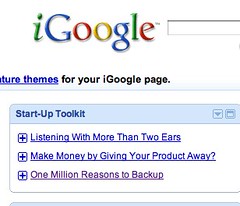One of the big challenges in any work place is paper. When many entrepreneurs leave a big company and start their own shops, they vow to cut out paper. It is always easier said than done. Where’s the IT department to create the form in a start up business? Where’s the quality assurance team to test it?Anyware, a company in the mobile application development space for over 12 years understands this problem and has developed a package called “reformXT” that lets your employees fill out forms on their mobile devices. They currently support Palm (runs on Palm Classic on thePRE), Windows Mobile, Blackberry, and, in about a month, iPhone.
Acting product manager Mark Jones and marketing manager April Sailsbury shared with me an example of a pizza chain who wanted employees to efficiently be able to order supplies from the distributor. An employee with a mobile phone or wireless device could go into the kitchen, freezer, and stockroom and analyze the inventory, clicking on different items he feels need to be ordered. When the order is done, it is submitted and can be retrieved at chain headquarters as a separate order, or as one line in a spreadsheet. The central group could then bulk order their products and have the appropriate ingredients sent to the individual stores.
I gave them a different example. Say a saleswoman is out in the field and wants to rapidly take orders based on inventory already available — how could she do that? Jones told me “If you want real time inventory you can work with the “reformXT Companion” to update form information from your own database.” Our saleswoman could fill the form on her blackberry and submit it while still on the customer site. As she looked through the specific items, she could see updated inventory numbers to let the customer know what is in stock and what might take longer (or offer a substitute product).
Small companies shouldn’t fear creating their own forms — if you can fill out a basic web form, you can create your own form with reformXT. The product runs as “Software as a Service” — on their website. Your employees mobile phones access their servers for the forms, and you get the data via email.
The reformXT software is free to try out and create forms, but costs per transaction of forms can range from a few cents to a dollar per form submitted, depending on your usage package. You buy batches of transactions and can save when you buy in bulk.
Cost out how much time it takes when employees are filling out paper and then retyping it — could you make the switch to mobile, on-the-go entry? Comments are welcome below.
(I published this originally at the Inc. Start-up Toolkit blog)





